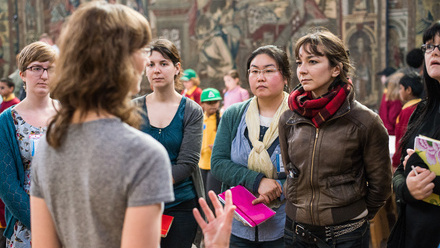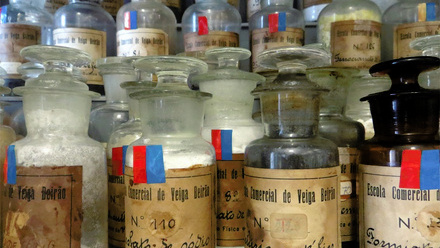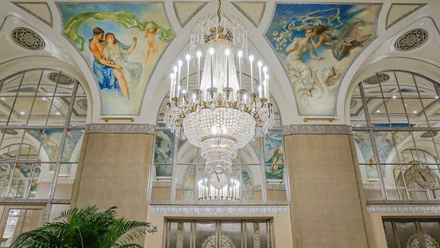The Icon Textile Group AGM will be held online on June 19th 2024.
The committee members will share summaries of the group's activities throughout the past year, and we will be addressed by Emma Chaplin, Chair of Icon's Board of Trustees.
Elections will take place to fill the positions of outgoing committee members. This will take the form of a Zoom poll. Details of the nominees have been circulated to Group members via Iconnect.
The AGM will conclude with the Graduate Research Exchange, where the following students and graduates will present their research:
Margherita Barone, University of Turin, 2023
Study and conservation of an early 20th-century female dress: issues and conservative solutions
This thesis project focused on a female dress from 1904-1907, which study aimed to analyze the garments' material, techniques and historical context and ultimately, conserve it.
Meticulous research on the object was carried out, entailing scientific analysis for fiber and dye identification, and an in-depth study of the dress's historical and technical aspects to design a suitable conservation strategy.
The main problems relating to the dress’ conditions regarded deformation of the fabric and severe structural damage of the weaving. To restore flexibility in fibers and flatten deformations, bodice and skirt were humidified using vapor or Gore Tex© based on the needs of the treated area. The consolidation process focused on the skirt due to its poorer condition and its potential for an interdisciplinary approach between conservation and tailoring. The severe fabric damage and the absence of the original internal lining posed historical accuracy concerns, specifically due to the sheerness of the material. A complex methodology was developed to restore the fabric's structural integrity while respecting its historical authenticity. It consisted of applying a total support in organza, following the construction of the pleats at the waist while providing sustain. The color of the support was chosen according to the taffetas used for the reconstruction of the underskirt so that the two, once overlayed, would have created the same visual effect as the original lining. This approach proved to be successful in solving conservation and aesthetical concerns, highlighting the importance of collaboration between conservation and dressmaking techniques when caring for garments.
Claudia Marcela Peña Barajas, Universidad Externado de Colombia (Archaeology), 2025
Weaving Landscapes: An Archeology of Landscapes and Textiles in the Caves of Los Indios, Del Duende, and El Conde, in La Mesa de Los Santos, Santander, Colombia (11th-15th Centuries AD)
This research investigates the relationship between landscapes and textiles from the caves of Los Indios, El Duende, and El Conde in La Mesa de Los Santos, Santander, Colombia, during the 11th-15th centuries AD. Employing a landscape archeology approach, the surrounding landscapes of these sites will be characterized, considering geomorphological, geological, and environmental aspects. Concurrently, an iconographic analysis of the textiles will be conducted, applying Panofsky's (1979) methodology to identify techniques, patterns, and represented symbolisms. Subsequently, Criado's (1999) formal analysis will be implemented to identify possible relationships between the landscapes and the recorded textile iconography. Furthermore, the weak analogy method will be applied to explore potential links between prehispanic and contemporary textile traditions, contrasting archaeological textiles with those produced by the current U'wa community. Following Tilley (1994) and Arnold & Espejo (2013), the landscape is conceived as a socialized agent, and textiles as living materialities that symbolize connections with the territory. The research findings will be shared and discussed with the local community through a collaborative dialogue, utilizing an audiovisual presentation integrating research outcomes and interviews with U'wa community members. This dialogue will give rise to a symbolic material expression, preserved by and for the community, embodying the shared knowledge.
Maria Enqvist and Mirjam Ruutma, Metropolia University of Applied Sciences: Degree Program of Conservation Conservation of Organic Materials, Bachelor of Culture and Arts, 2023
Documentation and Conservation of textile fragments from the collections of the Turku Cathedral Museum, Finland.
In this presentation we will discuss our bachelor theses on burial clothes and textile fragments from the collections of the Cathedral Museum in Turku Cathedral, Finland. Both the clothes and fragments were discovered during archaeological excavations in the Turku Cathedral in 1924. The excavations were part of the renovation project and led by the archaeologist Juhani Rinne. Due to unclear documentation, the original context of the textiles is lacking. The aim of both theses was, therefore, to make the material more comprehensible and contextualize it through conservation. Although the objects in both theses come from the same owner and excavation, they were relatively different in nature. Ruutma discussed fragments of suspected head coifs from lay burial, whereas Enqvist’s material was from a named burial chamber and was cataloged as a child’s burial clothes. The different burial settings played a role when choosing methodology and conservation strategies. Since the textiles were severely creased, the aim of both conservation projects was to improve the legibility of the finds. Ruutma concentrated also on testing different materials for supportive mounting and long-term preservation of the fragments. Enqvist, on the other hand, tried to combine archive research and the possibilities of textile analysis in order to reconnect the clothes with the dead child they once belonged to.



